The Department of Ethnography – IELTS Reading Answers
7 min read
Updated On
-
Copy link
Table of Contents

Limited-Time Offer : Access a FREE 10-Day IELTS Study Plan!
The Academic passage ‘The Department of Ethnography‘ is a reading passage that appeared in an IELTS Test.
Ideally, you should not spend more than 20 minutes on a passage. Let’s see how easy this passage is for you and if you’re able to make it in 20 minutes. If not, try more IELTS reading practice tests from IELTSMaterial.com
The question types found in this passage are:
True/False/Not Given Questions
True/False/Not Given Questions are very tricky. This question consists of several statements – If the statement is present in the article as it is then you need to mark it as true. If the statement is found to be the opposite of the sentence which is there then it should be marked as false. If the statement given in the question is not at all present in the article then it should be marked as not given. Do not spend a lot of time finding the sentence which is not there.
Matching Features
In Matching Features type of question, there will be a list of items in the box and you need to match these items by reading and understanding some sentences in the passages. The list may be of the name of people or cities. For example, If there is a name of a person in the box of items then the question may be to match the sentence with the person who said them. Like other types of match questions, some of the items mentioned may not be available in the passage. So, to save time read the passage before answering each question.
You should spend around 20 minutes on questions 1-12, which are based on the reading passage given below.
The Department of Ethnography
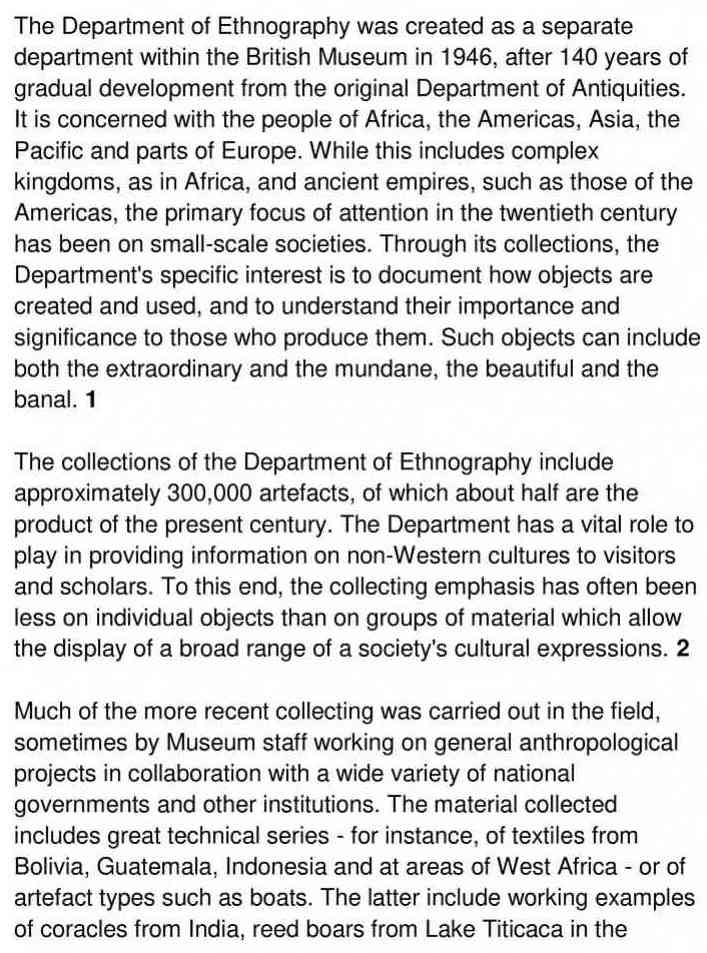

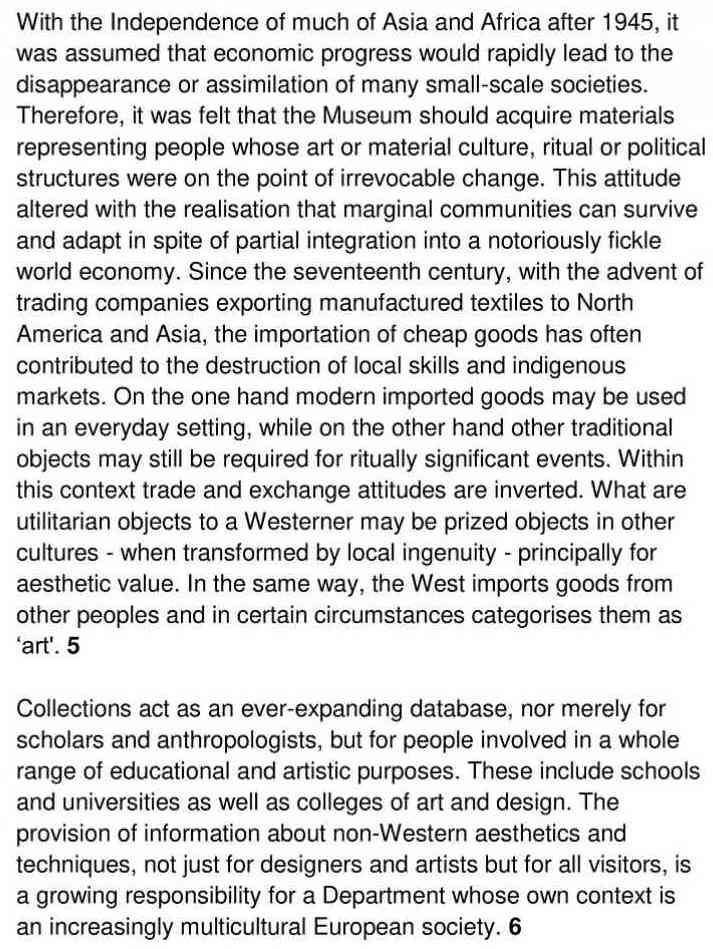
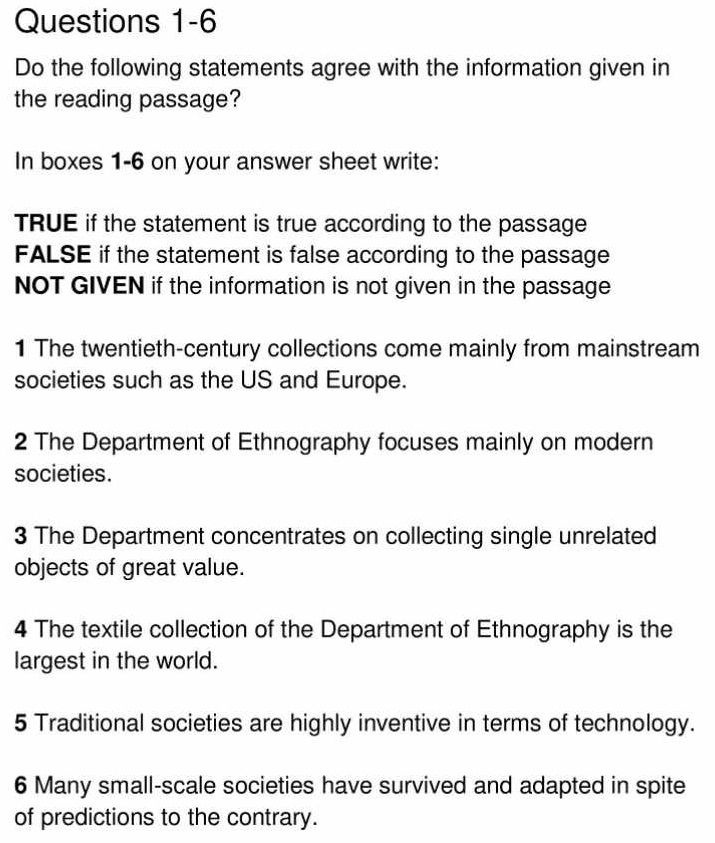
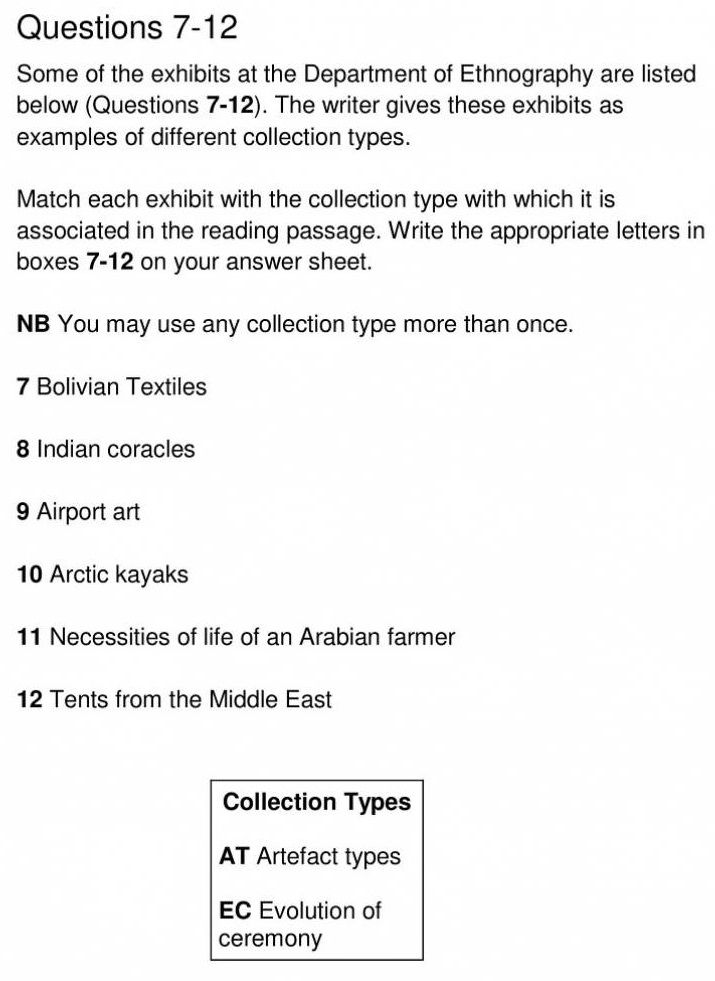
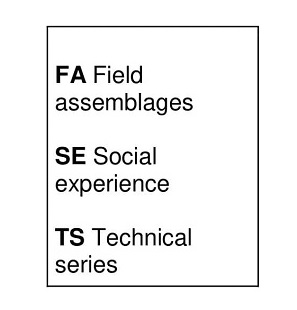
Answers
Unlock Answers
1 Answer: FALSE
Question Type: True/False/Not Given Questions
Answer location: Paragraph 1, line 1
Answer explanation: In the said paragraph, the author writes, “The Department of Ethnography was created as a separate department within the British Museum in 1946, after 140 years of gradual development from the original Department of Antiquities. It is concerned with the people of Africa, the Americas, Asia, the Pacific and parts of Europe.” Here, the lines clearly suggest that the collections contain works of people from the US, Europe, Africa, Asia and the Pacific. So, no preference is given to mainstream societies like the US and Europe.
2 Answer: FALSE
Question Type: True/False/Not Given Questions
Answer location: Paragraph 1, line 3
Answer explanation: If you read through, a line the paragraph explains, “while this includes complex kingdoms, as in Africa, and ancient empires, such as those of the Americas, the primary focus of attention in the twentieth century has been on small-scale societies.” Here the primary focus of attention means to focus mainly on small-scale societies and not on modern societies.
3 Answer: FALSE
Question Type: True/False/Not Given Questions
Answer location: Paragraph 1, line 4
Answer explanation: In the paragraph, the writer says “through its collections, the Department’s specific interest is to document how objects are created and used, and to understand their importance and significance to those who produce them. Such objects can include both the extraordinary and the mundane (normal), the beautiful and the banal (common).” From this statement, we can understand that the Department is interested in collecting artefacts of both extraordinary and common quality.
4 Answer: NOT GIVEN
Question Type: True/False/Not Given Questions
Answer location: Paragraphs 1 and 2
Answer explanation: In the whole passage, there are two mentions of the Department of Ethnography. In the 1st paragraph, the author says that the Department of Ethnography was created as a separate department within the British Museum in 1946, after 140 years of gradual development from the original Department of Antiquities. Later, in the 2nd paragraph, it is said that the collections of the Department of Ethnography include approximately 300,000 artefacts, of which about half are the product of the present century. None of these references tells us about the textile collection of the Department of Ethnography.
5 Answer: TRUE
Question Type: True/False/Not Given Questions
Answer location: Paragraph 4, line 6
Answer explanation: If you read thoroughly, it is given that “in fact, traditional practices (traditional societies) draw on a continuing wealth of technological ingenuity (highly inventive in terms of technology).” Therefore, the statement that traditional societies make incredible technological inventions agrees with the information in the passage.
6 Answer: TRUE
Question Type: True/False/Not Given Questions
Answer location: Paragraph 5, line 1
Answer explanation: In the said paragraph, you can refer to a line suggesting that “with the Independence of much of Asia and Africa after 1945, it was assumed (predicted) that economic progress would rapidly lead to the disappearance or assimilation of many small-scale societies. Therefore, it was felt that the Museum should acquire materials representing people whose art or material culture, ritual or political structures were on the point of irrevocable change. This attitude altered with the realisation that marginal communities can survive and adapt in spite of partial integration into a notoriously fickle world economy” Here ‘altered’ refers to the fact that the prediction or prevalent idea about the disappearance of the small-scale industries changed, and ‘adapt’ refers to the meaning that the marginal communities survived and adapted themselves to the economic progress despite limited acceptance into the ever-changing economy.
7 Answer: TS
Question Type: Matching Features
Answer location: Paragraph 3, line 2
Answer explanation: According to the paragraph the author says that recent collecting carried out in the field was done by Museum staff working on general anthropological projects in collaboration with a wide variety of national governments and other institutions. The material thus collected includes great technical series like textiles from Bolivia, Guatemala, Indonesia and West Africa.
8 Answer: AT
Question Type: Matching Features
Answer location: Paragraph 3, line 3
Answer explanation: In paragraph 3, the writer mentions that Museum staff working on general anthropological projects in collaboration with a wide variety of national governments and other institutions made some collections. The collections included ‘artefact types such as boats’ which are working examples of coracles from India.
9 Answer: FA
Question Type: Matching Features
Answer location: Paragraph 3, line 5
Answer explanation: A line suggests that the field assemblages, from the Sudan, Madagascar and Yemen, include varieties of material culture representative of one people. These assemblages may cover the necessities of life of an African herdsman or on the Arabian farmer, ritual objects, or even airport art.
10 Answer: AT
Question Type: Matching Features
Answer location: Paragraph 3, line 3
Answer explanation: If you read through, the author mentions that the collections made by the staff of the Museum included ‘artefact types’ such as boats and include working examples of coracles from India, reed boars from Lake Titicaca in the Andes, ‘kayaks from the Arctic’, and dug-out canoes from several countries.
11 Answer: FA
Question Type: Matching Features
Answer location: Paragraph 3, line 4
Answer explanation: According to the passage, the author writes that the ‘field assemblages’ from the Sudan, Madagascar and Yemen, include a whole range of material cultures representative of one people. These assemblages might cover the ‘necessities of life of an Arabian farmer.’
12 Answer: SE
Question Type: Matching Features
Answer location: Paragraph 3, line 6
Answer explanation: From paragraph 3, we come to know that sometimes a series of acquisitions might represent a decade’s fieldwork documenting ‘social experience’ as can be understood from the varieties of clothing and jewellery styles, ‘tents’ and camel trappings ‘from various Middle Eastern countries,’ or in the developing preferences in personal adornment and dress from Papua New Guinea.
Check More IELTS Reading Answers
| Nature Or Nurture Answers | The Falkirk Wheel Answers |
| The History Of Glass Answers | The Lost City Reading Answers |
| Gifted Children Learning Answers | Making Every Drop Count Answers |
Also check :
Practice IELTS Reading based on question types

Start Preparing for IELTS: Get Your 10-Day Study Plan Today!
Recent Articles

Nehasri Ravishenbagam

Haniya Yashfeen

Haniya Yashfeen

Haniya Yashfeen
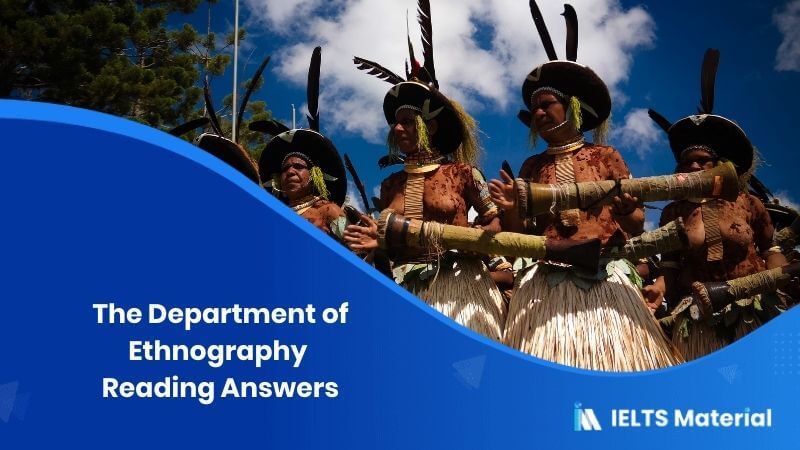



Post your Comments